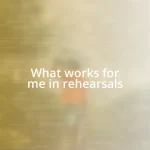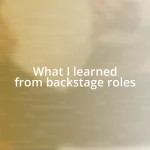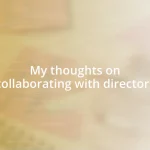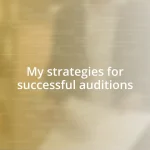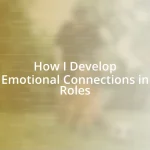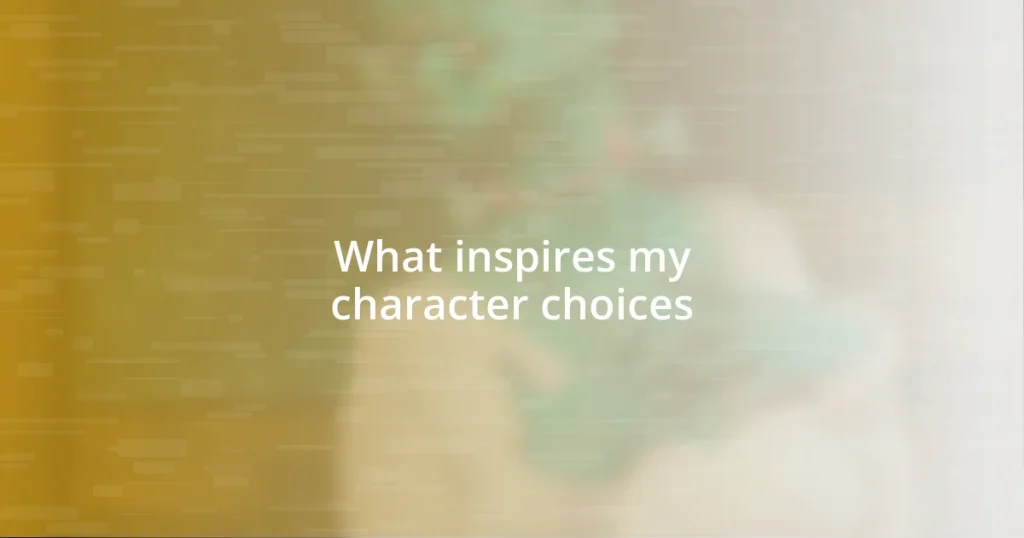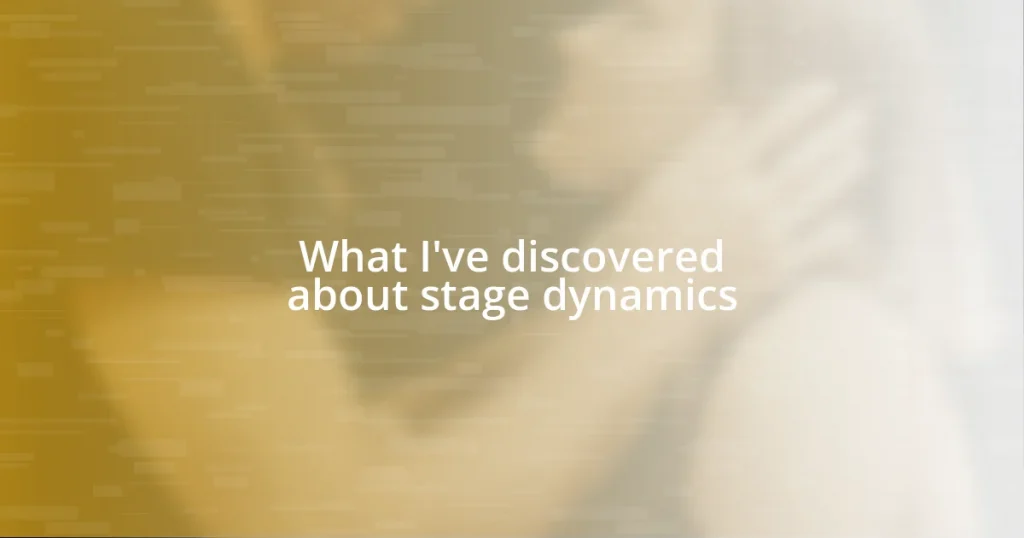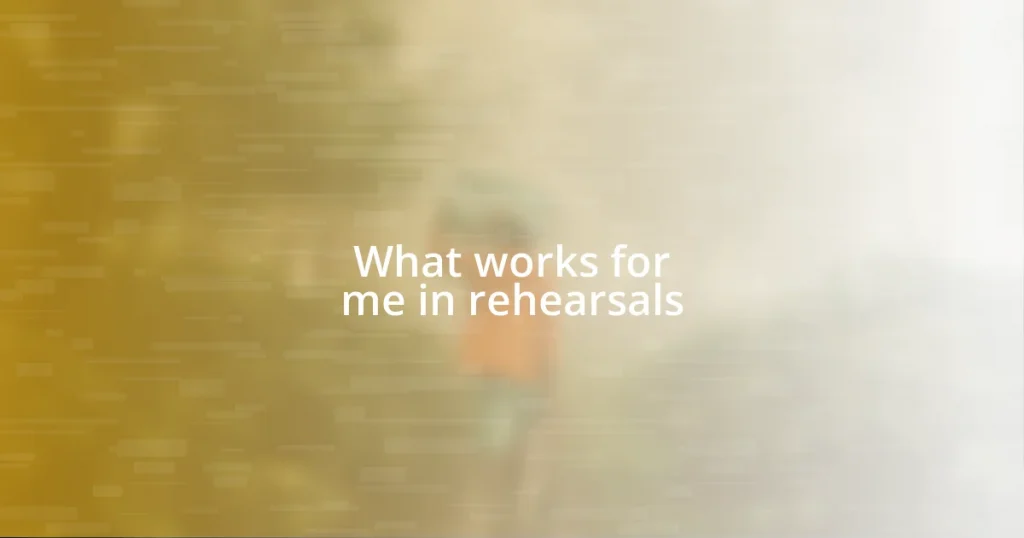Key takeaways:
- Voice in theatre is crucial for identity and expression, influencing audience connection through emotional delivery.
- Regular vocal exercises and experimentation with techniques such as breath support and resonance enhance performance quality and confidence.
- Seeking peer feedback fosters community, reveals blind spots in performances, and encourages personal growth in acting skills.

Understanding the Importance of Voice
Voice in theatre isn’t just about sound; it’s about identity and expression. When I first stepped on stage, my voice trembled, barely breaking through my nerves. I remember that feeling vividly—standing there, my throat dry, wishing my voice would magically transform into something powerful and commanding. Have you ever felt that way, standing in front of an audience, anxious about how your voice might be perceived?
What I’ve learned over time is that the voice carries emotions and intentions; it’s our instrument for storytelling. I vividly recall a moment during rehearsal when I found the courage to lower my pitch and slow my pace. The reaction from the audience was instant; their energy shifted, and I felt this magnetic connection. It was at that moment I realized: my voice could resonate deeply, conveying not just words, but the very essence of my character.
It’s a fascinating journey—discovering how the nuances of my voice influence scene work. Just think about it: each inflection, each pause, adds layers to a performance. The subtle quiver of a heartfelt confession or the booming authority in a dramatic moment can completely alter the audience’s experience. Have you ever experimented with different vocal techniques? Each exploration feels like peeling back a layer, revealing a new aspect of my creative self.

Identifying Your Unique Expressive Style
Identifying your unique expressive style is an essential part of becoming a true performer. I remember a specific workshop where we were encouraged to play with various vocal qualities: the raspy edge when portraying a rebellious character, or the soft lilt that added tenderness to a sincere moment. As I experimented, I discovered how much the pitch and tone of my voice could influence the audience’s emotional response. It was in this playful exploration that I realized I could harness my unique traits to tell stories more authentically.
To help identify your own expressive style, consider these strategies:
- Explore Various Vocal Techniques: Experiment with different vocal qualities, like breathiness or a strong projection, to see what feels natural.
- Record Yourself: Listen to your voice in recordings; it’s a great way to understand how you sound from an audience’s perspective.
- Perform Diverse Characters: Taking on various roles can reveal different facets of your voice and how they fit into character work.
- Reflect on Your Emotions: Pay attention to the emotions you convey in different situations; your voice often holds the key to those feelings.
- Seek Feedback: Getting input from peers or instructors can shed light on aspects of your voice you may not have recognized.
This journey of self-discovery is both exhilarating and enlightening, helping you to carve out your niche in the vast world of theatre.
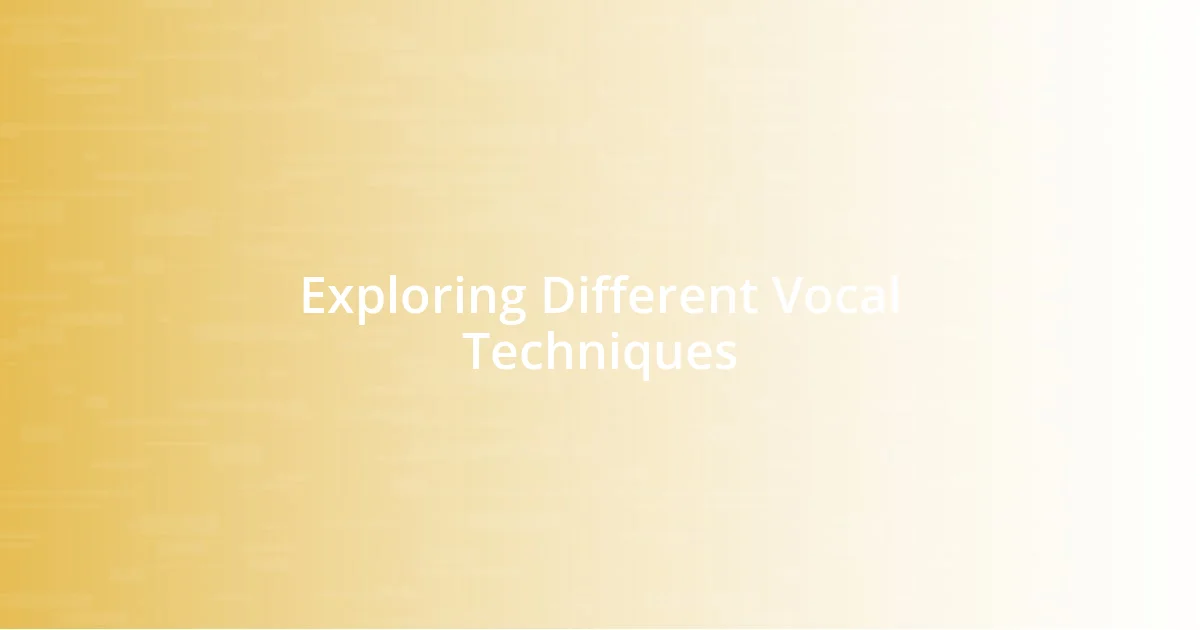
Exploring Different Vocal Techniques
Exploring different vocal techniques can feel like an adventure. When I dove into breath support exercises, I was amazed by the difference in projection and control. I vividly remember a rehearsal where I practiced diaphragmatic breathing, and suddenly, my lines had a newfound strength. Instead of scrambling to be heard, my voice flowed effortlessly, and I could actually feel the energy in the room shift.
Another technique that profoundly impacted my performance was experimenting with resonance. I recall standing in front of a mirror, adjusting the placement of my voice. When I focused on working from my nasal passages versus my chest voice, I discovered contrasting qualities that transformed how my performance resonated emotionally. It was like discovering hidden rooms in a familiar house; each room offered new dimensions and textures to my character.
| Vocal Technique | Description |
|---|---|
| Breath Support | Using the diaphragm to control airflow, improving projection and stamina. |
| Resonance | Adjusting voice placement for different qualities and emotional impact. |
| Pitch Variation | Modulating high and low tones to convey emotions effectively. |
| Articulation | Clearly pronouncing words to enhance understanding and character clarity. |
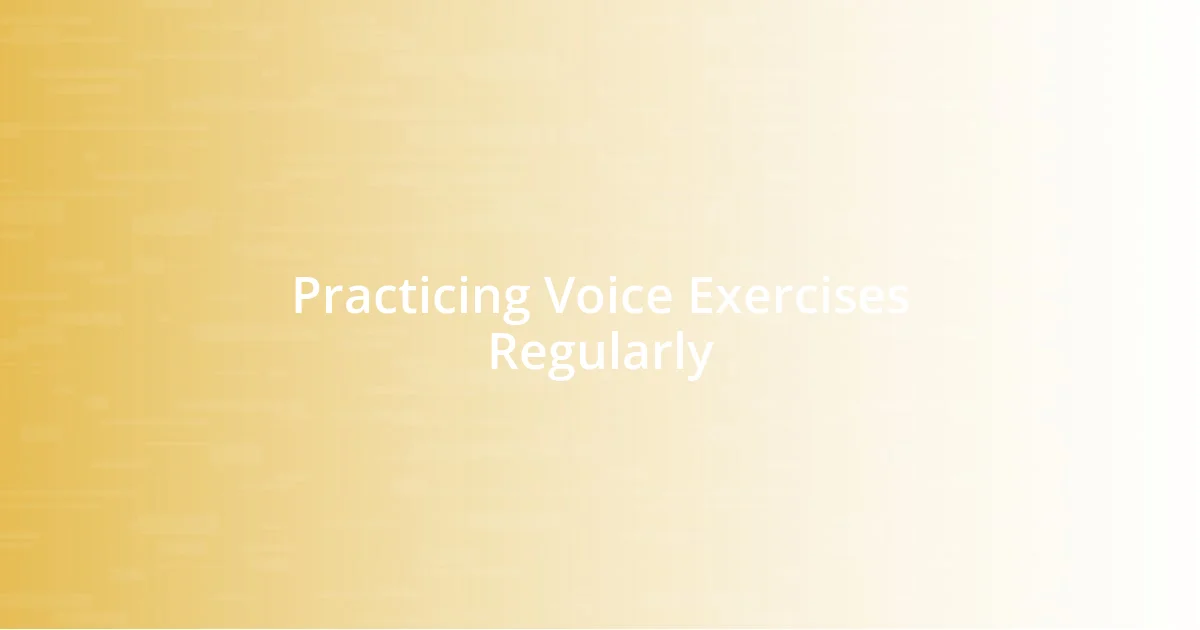
Practicing Voice Exercises Regularly
Practicing voice exercises regularly is a non-negotiable part of my routine as an actor. I’ve found that starting each day with warm-ups transforms not just my voice but also my confidence. One morning, as I recited tongue twisters and focused on my breath, I felt my anxiety fade away—it was just me and the sound that flowed from my lips.
Incorporating exercises like humming scales often fills me with a surprising sense of joy. I vividly recall a particularly chilly rehearsal where I hesitantly joined my peers in a group vocal warm-up. As we harmonized, the camaraderie electrified the atmosphere, and each note felt like a promise of vibrancy and connection. How often do we underestimate the power of our voice until we share it with others in a supportive space?
I’ve learned that consistency is key. Allocating time for vocal practice, whether it’s five minutes or half an hour, creates a noticeable shift in my delivery. It reminds me that my voice is more than a tool; it’s a vital part of my identity as a performer. I chuckle at how, after a week of dedicated exercises, I can often tackle lines that once felt daunting, as if my voice itself has become a trusted companion ready to take on any challenge.

Seeking Feedback from Peers
Seeking feedback from peers has been one of the most rewarding aspects of my journey. When I first opened up to my fellow actors about my performances, I felt a mix of vulnerability and excitement. I remember one rehearsal when a friend offered a simple tip about my pacing. It seemed minor at the time, but implementing it transformed how I delivered my lines, allowing the emotional beats to resonate more deeply with the audience.
The beauty of peer feedback lies in its diverse perspectives. I once rehearsed a scene that I thought was polished, only to realize how much I’d overlooked when my classmates shared their thoughts. One pointed out how my body language didn’t align with my dialogue, and through that conversation, I began to view my performance as a cohesive whole rather than focusing just on my vocal delivery. Isn’t it fascinating how a fresh pair of eyes can reveal blind spots we often miss?
Engaging in feedback sessions has also fostered a sense of community among us. After participating in a few rounds of constructive criticism, I felt that the atmosphere shifted. We became a supportive circle, encouraging one another to take risks. I find that when we celebrate each other’s growth, it fuels our own journeys. Have you ever experienced that uplifting sense of connection when sharing your work? I cherish those moments, where vulnerability transforms into strength through collaboration.

Overcoming Stage Fright Effectively
Confronting stage fright has often felt like standing on a tightrope, teetering between exhilaration and fear. Before my first big performance, I remember sitting backstage, my heart racing and palms clammy. To calm my nerves, I started a simple mantra: “I am here, and I am ready.” Repeating that phrase helped ground me, reminding me of my purpose and slowly turning that fear into focused energy.
Breath control has become my secret weapon against anxiety. During a particularly nerve-wracking show, I utilized deep belly breathing before going on stage. Inhaling through my nose, letting my stomach rise, and then slowly exhaling worked wonders. This practice not only steadied my heart rate but also gave me a moment to visualize my performance. Have you ever noticed how something as simple as breath can shift your entire emotional landscape? It’s incredible!
Ultimately, the more I perform, the more I embrace the presence of those jitters. I’ve learned to view stage fright as a powerful ally rather than an adversary. I recall stepping into the spotlight one night, heart pounding, but instead of succumbing to fear, I invited it in, channeling that energy into my character. Wouldn’t it be refreshing to see nerves as a source of strength? Now, each time I face an audience, I remind myself that these butterflies can lift my performance to new heights.

Embracing Continuous Learning in Theatre
Continuous learning in theatre is a journey that never truly ends. I vividly remember attending a workshop years ago, where the instructor challenged us to step out of our comfort zones. It was during an improvisation exercise that I realized the importance of spontaneity and adaptability—skills that have enriched not just my acting but also my day-to-day interactions. Have you ever found that the most unexpected experiences can teach you the most valuable lessons?
One of the most profound aspects of learning in this field is the influence of different styles and cultures. I had the chance to work with a group exploring classical Indian theatre, which introduced me to entirely new storytelling techniques. The colorful movements and rhythmic patterns made me reevaluate how I express emotions on stage. This exposure opened my eyes to the richness of diverse narratives. Isn’t it inspiring how a different perspective can seamlessly blend into our own?
As I continue my theatre journey, I embrace workshops and training sessions not as mere requirements but as opportunities for growth. Each class feels like a fresh chapter, offering insights that add layers to my performances. I recall one session where we focused on vulnerability in acting, and it felt like peeling back a layer of my own identity. The emotional release was cathartic, serving as a reminder that growth often resides just outside our comfort zones. What new skills are waiting for you to discover?


